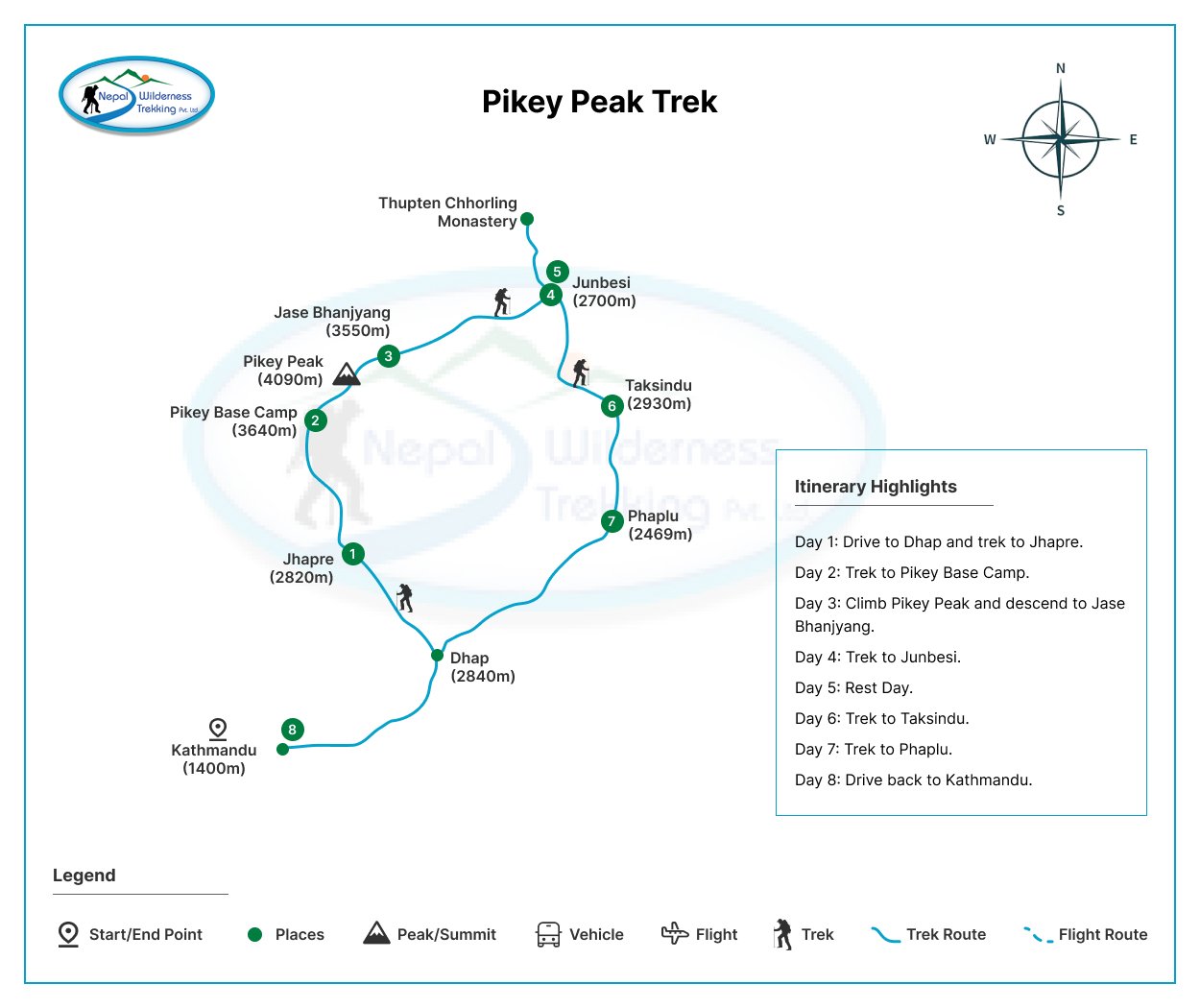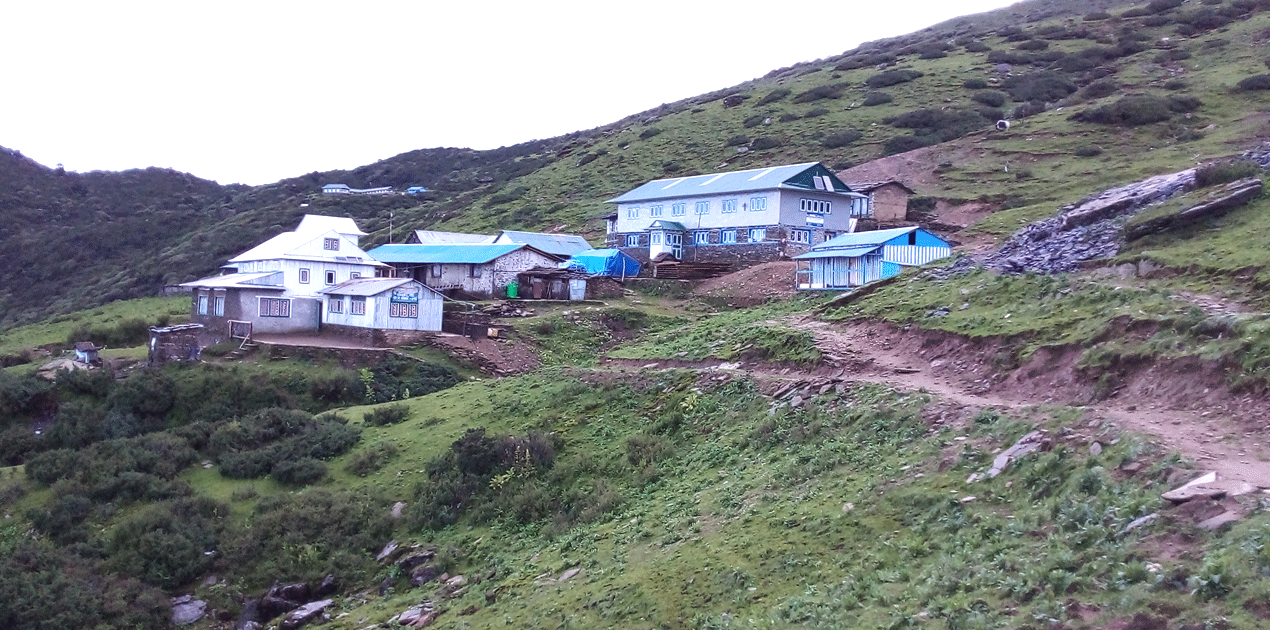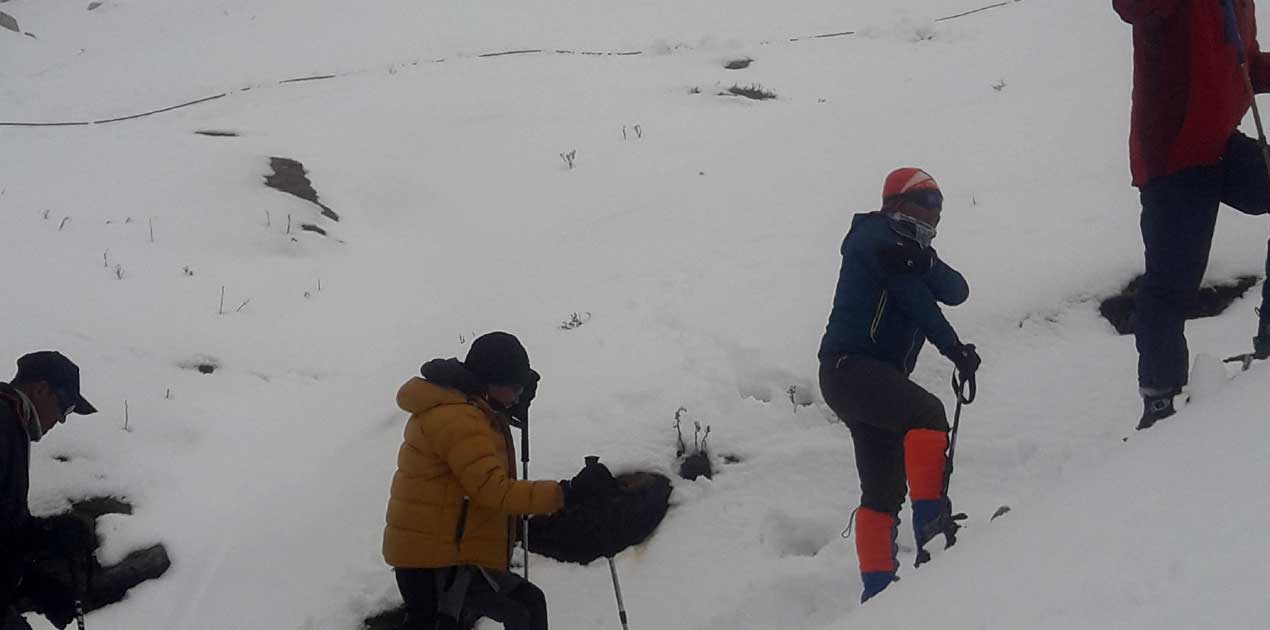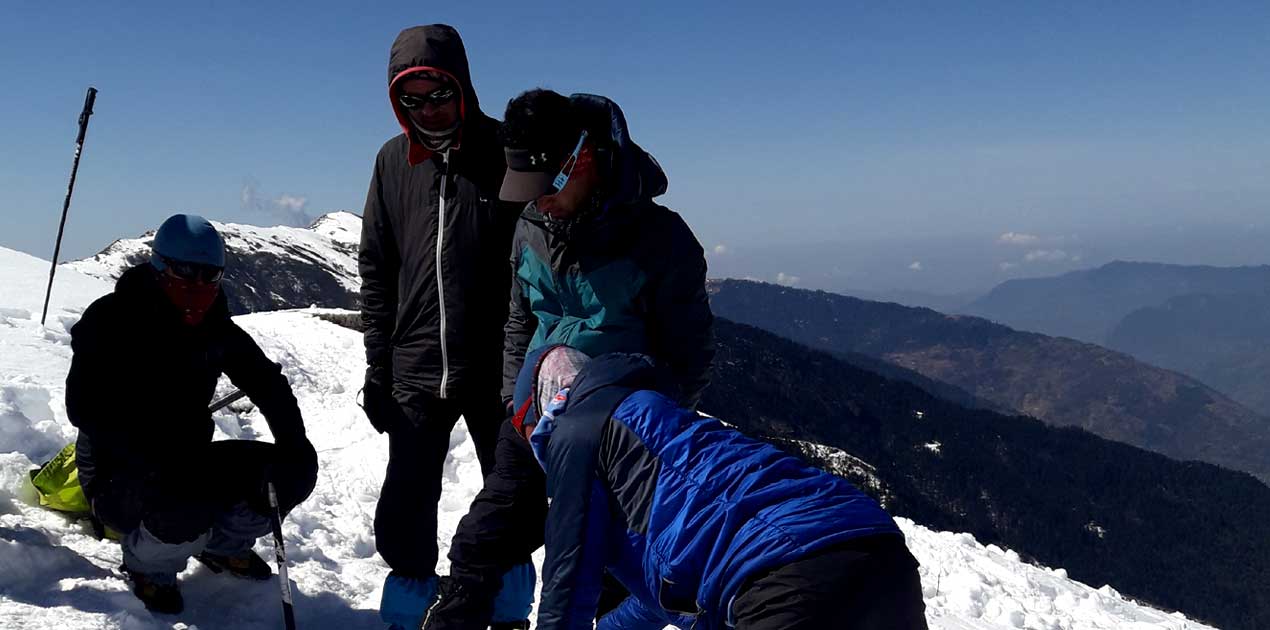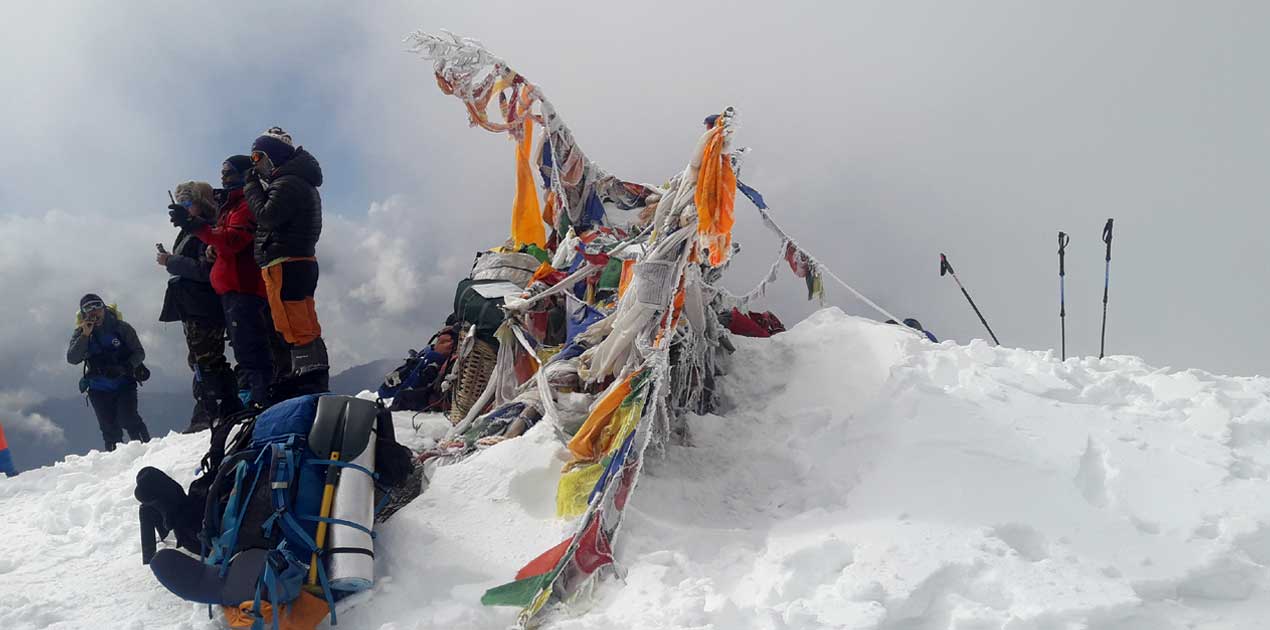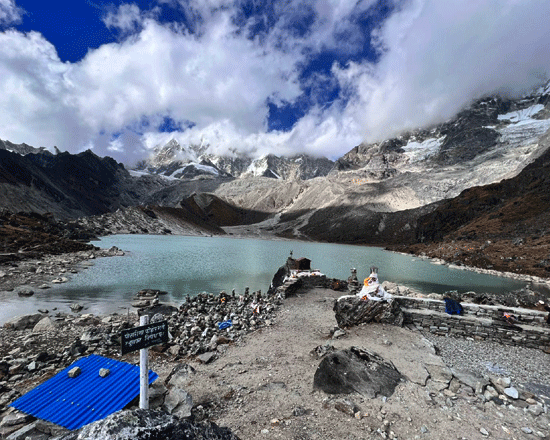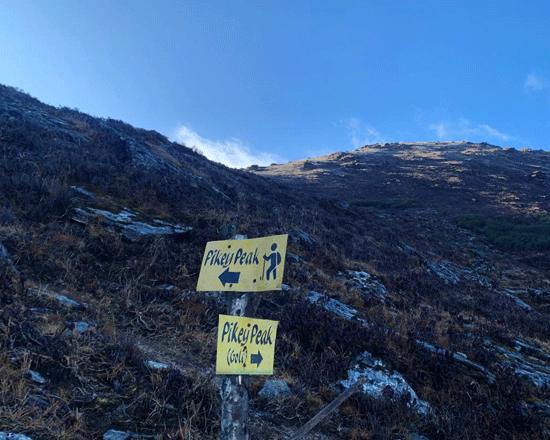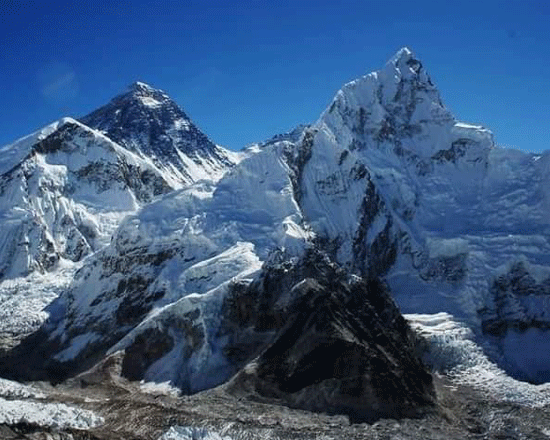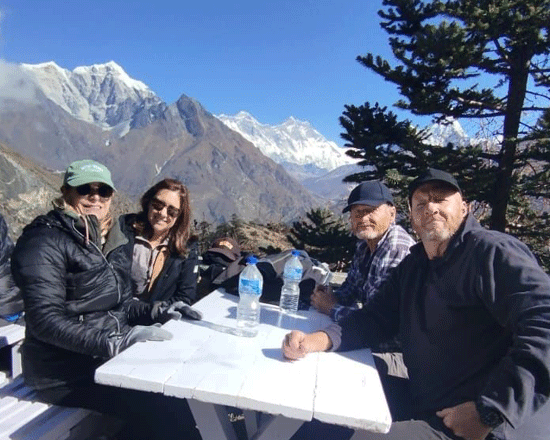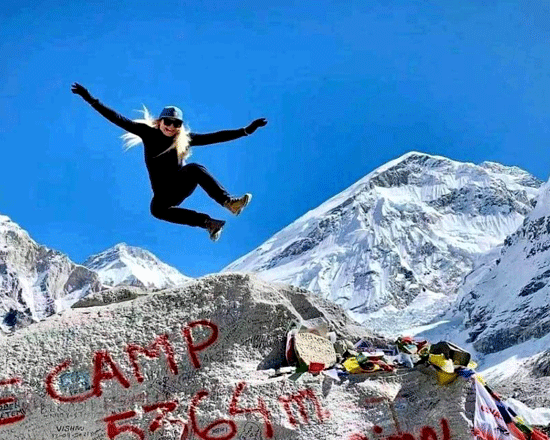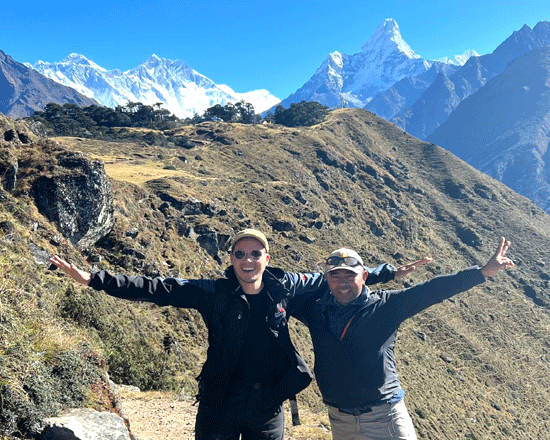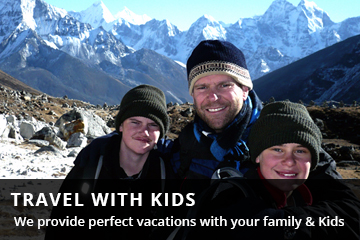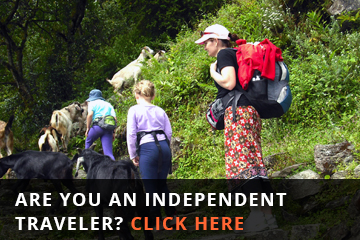Pikey Peak Trek
Pikey Peak Trek
Everest RegionTrip Facts
Since the terrain can be hard and the days long, hikers on these treks should be in good physical condition and have some previous mountain walking experience. Steep climbing may be involved, although it is never necessary to use ropes. Treks at this level can he arranged for periods of 16 to 21 days. Typically, a gradual ascent through a green river valley will lead you up to a number of high passes, where you will reach the altitude of 5416m. Often times, you will get a close insight into the Tibetan culture. Participants should expect to trek above 5416m/17872ft.
Mode of Travel : bus and flight100%
Overview
Pikey Peak Trek: 8 Day Package itinerary
Pikey Peak Trek, also chosen by Sir Edmund Hillary as his favorite trekking destination, is synonymous with towering Himalayan Peaks and breathtaking landscapes. Moreover, it offers a valuable collection of trekking routes that add authentic journeys to any adventurer. Among these, the Pikey Peak Trek stands as a hidden glory land of Nepal, below the Everest region.
This lesser-known trekking route is a challenging yet rewarding journey that takes you through remote Sherpa villages, pristine forests, and picturesque alpine valleys. Pikey Peak, at 4,065 meters, is the crowning jewel of this trek, offering stunning panoramic views of the Himalayan range, including the majestic Mt. Everest, Lhotse, Makalu, and Kanchenjunga. This 8-day trek is perfect for those who want to explore the beauty of the lower Everest region without the high altitude challenges of other treks.
Value for Money
The Pikey Peak Trek with the Nepal Wilderness Trekking Team offers exceptional value for money. The comprehensive package includes guided services, accommodation, meals, permits, and transportation. This helps to ensure that trekkers have everything they need for a successful journey. Our transparent pricing and commitment to quality service make the trek a worthwhile investment. Trekkers can begin on this adventure knowing that they are getting the best possible experience at a fair and reasonable cost.
The Hidden Beauty of Lower Khumbu
The Pikey Peak Trek in lower Khumbu is a route-less traveled destination, offering fearless trekkers the opportunity to explore the best off-the-beaten-path terrain. This region holds historical significance as the early trails used by Sir Edmund Hillary and Tenzin Norgay Sherpa during their Everest expeditions over this pristine landscape. On the way to the journey, you’ll encounter several Buddhist monuments, including gompas (monasteries) and stupas (shrines), adding a cultural dimension to your trek.
The Route: Dhap to Phaplu
The Pikey Peak Trek begins in Dhap (also known as Hile), a picturesque village often referred to as the “Switzerland of Nepal.” From this point, you’ll embark on your remarkable journey, traversing the serene landscapes and charming Sherpa villages that define the lower Khumbu region. The trek concludes in Phaplu, a town renowned for its airstrip. For those with additional time and an appetite for adventure, continuing onward to Everest base camp and flying back from Lukla offers a thrilling extension to the Pikey Peak experience.
Sunrise View from Pikey Peak
- Panoramic Views: The 360-degree view from Pikey Peak is often described as one of the best in Nepal. On clear days, trekkers can see six of the world’s highest mountains, making it a truly breathtaking experience. The view is stunning at sunrise, and many travelers claim that Pikey Peak offers one of the best views of Everest, even rivaling more popular spots like Kala Patthar
- Optimal Positioning: The peak’s location and elevation make it an ideal spot for sunrise views. The early morning light casts a golden glow on the snow-capped peaks, creating a stunning contrast against the dark sky.
- Less Crowded: Compared to more popular trekking routes, the Pikey Trek is less crowded, offering a peaceful and serene environment to enjoy the sunrise. This allows for a more intimate and personal experience.
Best Time for Pikey Peak Trek: Spring and Autumn
The ideal time to undertake the Pikey Peak route in Nepal is during the spring months from March to June and the autumn months from September to December. During these periods, the weather is typically stable, and the sky remains clear, providing unobstructed views of the Himalayan peaks.
Spring offers mild weather, with the added charm of rhododendrons in full bloom, painting the landscape with vibrant colors. However, this season is popular among trekkers.
The Autumn season is characterized by favorable weather. Consequently, it is an excellent time to enjoy the tranquility of the Pikey Peak trek. Moreover, the crisp autumn air enhances visibility, allowing you to achieve breathtaking mountain views. Additionally, the stable weather conditions during this season ensure safer and more enjoyable trekking experiences. Furthermore, the vibrant autumn greenery adds an authentic array of colors to the already beautiful landscapes, making your journey even more picturesque. Therefore, trekking in autumn not only provides serenity but also lights up the overall visual and sensory experience of the Pikey Peak trek. This trek is doable within 4 days itinerary‘ time frame.
Trekking during the monsoon season (June to August) is not recommended due to heavy rainfall and the risk of landslides. The winter months (January to February) can be cold months and snowy at higher altitudes, making trekking challenging this time.
Your path to fulfilling adventures beauty
- Less Crowded: Unlike some of the more popular trekking routes in Nepal, the Pikey Trek is relatively less crowded. Consequently, this allows you to immerse yourself in the serene beauty of the region. Additionally, the reduced number of trekkers means you can enjoy the pristine landscapes without the hustle and bustle observed on busier routes.
- Authentic Sherpa Culture: The Pikey Peak trek passes through traditional Sherpa villages that are less commercialized than those found on the classic Everest Base Camp trek. You can interact with local communities, visit ancient monasteries, and observe the traditional Sherpa way of life in villages like Jhapre and Junbesi. This offers an authentic cultural experience without the large crowds that flock to more popular trekking routes.
- Beautiful Landscapes: The trek takes you through lush forests, verdant landscapes, and stunning mountain vistas, creating a visual feast for trekkers.
- Ancient Monasteries: The region is home to several ancient monasteries and temples, including the Thupten Chholing Monastery, where you can learn about Buddhism and its influence on the local culture.
Accommodation Overview
- Teahouses: The trek primarily features teahouses which are simple guesthouses run by local families. These provide basic amenities such as beds, blankets, and shared bathrooms. Teahouses offer a cozy and authentic experience of local hospitality.
- Lodges: In some of the larger villages, you will find slightly more developed lodges with additional amenities, though they remain relatively basic compared to higher-end accommodations.
- Facilities: Expect basic facilities. Most teahouses provide meals and hot drinks, and some offer additional services like charging stations and Wi-Fi, though connectivity can be limited.
- Comfort: Bring a sleeping bag, especially if you prefer extra warmth or are trekking during colder months. While teahouses provide blankets, they might not be sufficient for very cold nights.
- Local Experience: Staying in teahouses and lodges allows you to interact with local people and experience the traditional Nepali hospitality and culture.
Accessibility
The Pikey Peak trek is more accessible than many other trekking routes in Nepal. You don’t need to fly into Lukla, often affected by flight delays due to weather. Instead, the trek typically starts with a drive from Kathmandu to Dhap or Jiri, making it easier to plan logistically and often more affordable.
Spiritual and Historical Significance
Pikey Peak holds spiritual significance for the local Sherpa people. The name “Pikey” is derived from the local Sherpa deity, which is worshipped by the community. The trek also allows for visits to important Buddhist monasteries like Thupten Choeling Monastery, adding a spiritual element to the adventure.
Physical fitness preparation
To undertake the Pikey Peak Trek, trekkers need to be physically fit. Also recommended to run for at least an hour a day for 10 to 15 days or for a month depending on your fitness level before the trek. This helps to build the individual’s hiking stamina. This preparation helps in acclimatizing to the high altitudes and ensures you are ready for the demanding terrain of the trek. What’s crucial is a willingness to prepare physically and mentally, and to respect the demands of the environment. Proper acclimatization ensures trekkers can fully enjoy the journey, absorbing the breathtaking landscapes and immersing themselves in the local culture.
Essential Equipment for the Trek
When it comes to equipment, it is crucial to ensure that, you bring the recommended trekking equipment list. Remember, quality trekking equipment can make your trip enjoyable, while a poor one can make it miserable. Since the weather varies depending on the altitude and time of year, wear suitable footwear, including waterproof walking boots that you have worn before the trek, along with warm socks and gaiters for winter conditions. It is advisable to have loose, casual trousers, and thermal leggings, as well as waterproof pants.
About the company
Nepal Wilderness Trekking boasts an expert team of male and female Sherpa guides who lead numerous treks to the stunning Pikey Peak every year. Being a less touristy area, our highly knowledgeable guides are well-versed in the local terrain, culture, and traditions. They ensure a safe and enriching experience for all trekkers.
Detail Itinerary
- Day 1: Drive to Dhap (Hile) at 2840m and trek to Jhapre at 2,820m/9,249ft in 10 hours
- Day 2: Trek to Pikey Base Camp, 3,640 m/11,939 ft, 6-7 hours
- Day 3: Climb to Pikey Peak (4090 m) and descend to Jase Bhanjyang (4 hrs, 3,550 m/11,644 ft)
- Day 4: Trekking to Junbesi, a distance of 2,700 meters (8,856 feet), approximately 5-6 hours
- Day 5: Trek around Thupten Chhorling Monastery and rest day at Junbesi (3 hrs, 2,700 m/8,856 ft)
- Day 6: Trek to Taksindu, 2,930 m/9,610 ft, 6-7 hours
- Day 7: Trek to Phaplu (3-4 hours, 2,469 m/8,098 ft)
- Day 8: Drive to Kathmandu by Bus or sharing jeep.
Cost Included
- Kathmandu -Dhap by bus
- Phablu - Kathmandu by Bus or Share Jeep
- Italian, Chinese, Nepali, Indian, and other European foods are available three times a day (breakfast, lunch, and dinner).
- Accommodation in tea houses according to the itinerary
- Kitbag for storing your belongings
- Sleeping bag for a comfortable night's sleep on a trek in minus-25 degrees
- TIMS Entrance Permit
- Experienced English-speaking, Government licensed holder trekking guide
- Experienced Sherpa helpers (porters) 1 porter for every 2 pax
- Guide, and Porter meals, accommodation, salary, and insurance
- Necessary paper works, all government, and local taxes
- A certificate of appreciation from Nepal wilderness trekking after a successful trek
Cost Excluded
- Airfare for international flights
- Upon arrival at Tribhuwan International Airport, Nepal entry visa fees vary by duration (15 days - $25-30, 30 days
- Accommodations and meals in Kathmandu before and after our journey
- Personal equipment for high and cold temperatures
- Emergency high-altitude rescue and evacuation are covered by travel insurance
- All beverages, Soft and caffeinated table drinks such as coke, beer,
- Drinking water/mineral water, Dessert, etc. Hot shower, laundry
- Tip for guide and porter
- Excluded are all costs and expenses not listed under "cost includes"
- Inclusion of costs or delays beyond the control of the management, such as landslides, weather conditions, itinerary modifications due to safety concerns, illness, changes in government policies, strikes, etc.
| Trip Dates | Trip Price | Confirmed Pax | Trip Status | |
|---|---|---|---|---|
| March 31, 2025 | US$ 600 | Join a Group | Book Now | |
| April 4, 2025 | US$ 600 | Join a Group | Book Now | |
| April 9, 2025 | US$ 600 | Join a Group | Book Now | |
| April 13, 2025 | US$ 600 | Join a Group | Book Now | |
| April 18, 2025 | US$ 600 | Join a Group | Book Now | |
| April 22, 2025 | US$ 600 | Join a Group | Book Now | |
| April 26, 2025 | US$ 600 | Join a Group | Book Now | |
| April 30, 2025 | US$ 600 | Join a Group | Book Now | |
| May 4, 2025 | US$ 600 | Join a Group | Book Now | |
| May 8, 2025 | US$ 600 | Join a Group | Book Now | |
| May 12, 2025 | US$ 600 | Join a Group | Book Now | |
| May 16, 2025 | US$ 600 | Join a Group | Book Now | |
| May 20, 2025 | US$ 600 | Join a Group | Book Now | |
| May 24, 2025 | US$ 600 | Join a Group | Book Now | |
| May 28, 2025 | US$ 600 | Join a Group | Book Now | |
| May 31, 2025 | US$ 600 | Join a Group | Book Now | |
| September 4, 2025 | US$ 600 | Join a Group | Book Now | |
| September 9, 2025 | US$ 600 | Join a Group | Book Now | |
| September 13, 2025 | US$ 600 | Join a Group | Book Now | |
| September 18, 2025 | US$ 600 | Join a Group | Book Now | |
| September 22, 2025 | US$ 600 | Join a Group | Book Now | |
| September 23, 2025 | US$ 600 | Join a Group | Book Now | |
| September 27, 2025 | US$ 600 | Join a Group | Book Now | |
| September 30, 2025 | US$ 600 | Join a Group | Book Now | |
| October 4, 2025 | US$ 600 | Join a Group | Book Now | |
| October 8, 2025 | US$ 600 | Join a Group | Book Now | |
| October 12, 2025 | US$ 600 | Join a Group | Book Now | |
| October 17, 2025 | US$ 600 | Join a Group | Book Now | |
| October 22, 2025 | US$ 600 | Join a Group | Book Now | |
| October 27, 2025 | US$ 600 | Join a Group | Book Now | |
| October 31, 2025 | US$ 600 | Join a Group | Book Now | |
| November 4, 2025 | US$ 600 | Join a Group | Book Now | |
| November 9, 2025 | US$ 600 | Join a Group | Book Now | |
| November 13, 2025 | US$ 600 | Join a Group | Book Now | |
| November 17, 2025 | US$ 600 | Join a Group | Book Now | |
| November 21, 2025 | US$ 600 | Join a Group | Book Now | |
| November 25, 2025 | US$ 600 | Join a Group | Book Now | |
| November 30, 2025 | US$ 600 | Join a Group | Book Now | |
| December 4, 2025 | US$ 600 | Join a Group | Book Now | |
| December 9, 2025 | US$ 600 | Join a Group | Book Now | |
| December 13, 2025 | US$ 600 | Join a Group | Book Now | |
| December 18, 2025 | US$ 600 | Join a Group | Book Now | |
| December 23, 2025 | US$ 600 | Join a Group | Book Now | |
| December 27, 2025 | US$ 600 | Join a Group | Book Now | |
| December 31, 2025 | US$ 600 | Join a Group | Book Now |
Trip Map
